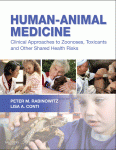
The concept of a healthy home as promoted by the U.S. Department of Housing and Urban Development (HUD) and other federal agencies involves not only aspects of the built environment, but also creating homes that are safe in terms of toxic hazards such as carbon monoxide and pesticides. This concept is one in which human health care providers, public health professionals, and veterinarians can actively collaborate because it seems clear that what is good for the human beings in the household in terms of toxic hazard reduction is also good for animals living in the household.
Article Outline
HEALTHY HOMES
Key Points for Clinicians and Public Health Professionals: Public Health Professionals, Human Health Clinicians, Veterinary Clinicians
PRIMARY PREVENTION OF TOXIC EXPOSURE
ANIMALS AS SENTINELS FOR HUMAN TOXIC EXPOSURE RISK
ACUTE TOXIC EXPOSURES
Identification of Exposure
CHRONIC TOXIC EXPOSURES AND HEALTH EFFECTS
CARBON MONOXIDE
Key Points for Clinicians and Public Health Professionals: Public Health Professionals, Human Health Clinicians, Veterinary Clinicians
LEAD
PESTICIDES
INSECT REPELLENTS USED ON HUMAN BEINGS
PESTICIDES USED ON ANIMALS
GROUPS AT RISK
TOXICITY IN HUMAN BEINGS
TOXICITY IN ANIMALS
DIAGNOSIS
MANAGEMENT OF ANIMAL-RELATED PESTICIDE POISONING
ENVENOMATIONS
HARMFUL ALGAL BLOOMS - Environmental Exposure to Harmful Algae and Toxins; Algae Bloom
Accidental Poisoning by Other Solid and Liquid Substances, Gases, and Vapors
Accidental Poisoning from Poisonous Foodstuffs and Poisonous Plants
Shellfish
Other Fish
Toxic Effect of Noxious Substances Eaten as Food
Fish and Shellfish
Accidental Poisoning from Poisonous Foodstuffs and Poisonous Plants
Other Fish
Chemical Poisoning and Other Contamination
Poisoning from Contaminated Water Supply
Key Points for Clinicians and Public Health Professional: Public Health Professionals, Human Health Clinicians, Veterinary Clinicians
PRIMARY PREVENTION
EARLY DETECTION, SURVEILLANCE, AND EDUCATION
ACTIONS TO PREVENT EUTROPHICATION
CAUSATIVE AGENTSROUTES OF EXPOSURE AND METABOLIC FATE
GROUPS AT RISK
TOXICITY IN HUMAN BEINGS
TOXICITY IN ANIMALS - Wildlife, Companion Animals
DIAGNOSIS
MANAGEMENT OF HAB TOXICITY - Treatment in Human Beings, Treatment in Animals
References